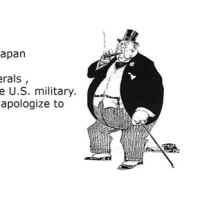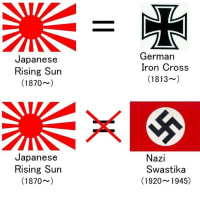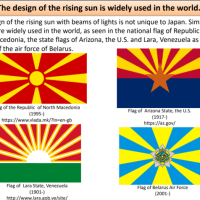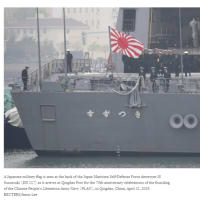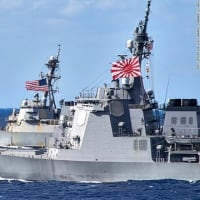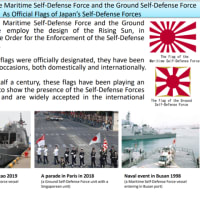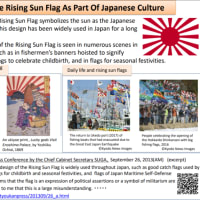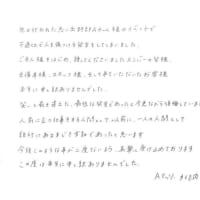ニコラスクリストフがこうした反論を掲載したのは評価する。
October 4, 2012, 2:32 PM
The Diaoyu/Senkaku Islands: A Japanese Scholar Responds
By TAKAYUKI NISHI
I recently posted a commentary by Han-Yi Shaw, a scholar from Taiwan, arguing that Japan in effect stole the Diaoyu/Senkaku islands from China in 1895 as the spoils of war. I invited Japanese scholars to make the opposing case, and I am happy to post a response from Takayuki Nishi, an Assistant Professor at the Global Regional Center of Shizuoka Prefectural University. As always, I welcome your comments and feedback. – Nicholas Kristof
The People’s Republic of China’s claim that the Senkaku/Diaoyu Islands
are an “inherent territory” of China contradicts its own demands before 1970.
Before 1970, the People’s Republic of China did not merely acquiesce to Japanese sovereignty over the Senkaku/Diaoyu Islands. China demanded self-determination for the U.S.-administered Ryukyu Islands, with an option of return to Japanese administration, while specifically including the “Senkaku Islands”. Thus, China agreed with the United States and Japan that, in the event of the Ryukyu Islands’ return to Japanese administration, the United States should also return the Senkaku Islands to Japan.
The common law doctrine of estoppel prevents a party from gaining by making an allegation or denial that contradicts what the party has previously stated as a fact.
According to Article 38 of the Statute of the International Court of Justice, if Japan and China ever agree to refer China’s claim to the Senkaku/Diaoyu Islands to the Court, the Court shall either apply the following four standards, or if the parties agree thereto, ignore them and decide the case ex aequo et bono (i.e., according to what is right and good, rather than according to the law):
a. international conventions, whether general or particular, establishing rules expressly recognized by the contesting states;
b. international custom, as evidence of a general practice accepted as law;
c. the general principles of law recognized by civilized nations;
d. subject to the provisions of Article 59, judicial decisions and the teachings of the most highly qualified publicists of the various nations, as subsidiary means for the determination of rules of law.
The Court has applied the general principle of estoppel in a number of cases, including disputes over islands.
Thus, the most important evidence for judging China’s claim legally is China’s demand before 1970 for self-determination of the U.S.-administered Ryukyu Islands, specifically including the “Senkaku Islands,” with an option of return to Japanese administration.
For instance, the People’s Daily, the official newspaper of the Central Committee of the Communist Party of China, published an article titled “The Struggle of the People of the Ryukyu Islands against U.S. Occupation” (Liuqiu Qundao renmin fandui Meiguo zhanling douzheng) on January 8, 1953. It was published in the “Documents” (ziliao) section, which is usually edited carefully to give the party line. The whole article is posted in simplified characters here. An image of the first half of the article is here.
The first sentence defines the Ryukyu Islands:
The Ryukyu Islands lie scattered in the sea to the northeast of our country’s Taiwan and southwest of Japan’s Kyushu Island, and includes seven groups of islands, namely Senkaku Islands [Jiange Zhudao], Sakishima Islands, Daito Islands, Okinawa Islands, Oshima Islands, Tokara Islands, and Osumi Islands, each with large and small islands; more than fifty islands have names and more than four hundred are unnamed and small; their land area totals 4670 square kilometers.
Self-determination for the Ryukyu Islands, with return to Japanese administration as an option, is demanded in the final sentence (and elsewhere):
The Ryukyu people’s struggle against transformation of Ryukyu by the United States into a military base, against enslavement by the United States, and for freedom, liberation, and peace is not isolated; it is inseparable from the Japanese people’s struggle for independence, democracy, and peace; it is inseparable from the struggle of Asian and Pacific peoples and the peoples of all countries of the world to defend peace; therefore, despite the ongoing barbaric repression of the Ryukyu
people by the U.S. occupiers, final victory belongs inevitably to the Ryukyu people.
In short, China demanded the U.S.-administered “Senkaku Islands” outcomes other than transfer to China, even while fiercely fighting U.S. armed forces in Korea, which were supported from Okinawa and mainland Japan. This Chinese demand cannot be explained away as a result of ignorance about the islands’ situation.
I do not evaluate here Mr. Han-yi Shaw’s selection and interpretation of documents from the nineteenth century and before, because they are irrelevant to the estoppel over the most recently recognized border.
However, for the sake of argument, if Mr. Shaw’s interpretation were entirely correct, than the People’s Republic of China (and less explicitly, the Republic of China on Taiwan) has legally disowned the Senkaku/Diaoyu Islands by mistake, through sheer lack of interest in the islands before 1970.
Takayuki Nishi is a Project Assistant Professor at the Global Center for Asian and Regional Research at University of Shizuoka, in Shizuoka, Japan.
September 20, 2010, 2:05 PM 372 Comments
More on the Senkaku/Diaoyu Islands
By NICHOLAS KRISTOF
I blogged recently about the dust-up in Asia between China and Japan over the uninhabited islands known as the Senkakus in Japan and the Diaoyu islands in China. Both claim them, as does Taiwan for good measure. I argued that China appeared to have a slightly better claim to them, although they might also plausibly be terra nullis, not belonging to any nation. Here’s the latest on the tiff.
Japan, which doesn’t even acknowledge that there is a territorial dispute, protested my blog post and wrote me a letter outlining some of its arguments. I’m not persuaded ― it seems silly to say that China didn’t protest the seizure of a few barren rocks, when it was so weak that it had lost the entire province of Taiwan ― but Japan does have valid points to make. I wish it would seek referral of the issue to the International Court of Justice, setting a precedent for legal judgments rather than brute force to settle conflicting claims.
I’ve been following the ups and downs on the islands since the 1980’s and wrote about them with my wife in our 2000 book about Asia, “Thunder from the East.” Alas, I’ve never found a way to land on them, and I do worry that the U.S. could be drawn into the dispute. As I noted in my previous item, the U.S. in theory is required to defend Japan’s claim to the islands, based on the wording of the U.S./Japan Security Treaty. In practice, we wouldn’t, but our failure to do so would cause reverberations all over Asia. In any case, here are excerpts from the Japanese letter of protest, apparently written at the request of the Japanese Foreign Minister (who knows who reads this blog?). Since I suggested that the islands were more likely China’s, I want to give them a chance to respond:
1) Since 1885, surveys of the Senkaku Islands had thoroughly been made by the Government of Japan through the agencies of Okinawa Prefecture and by way of other methods. Through these surveys, it was confirmed that the Senkaku Islands had been uninhabited and showed no trace of having been under the control of China. Based on this confirmation, the Government of Japan made a Cabinet Decision on 14 January 1895 to erect a marker on the Islands to formally incorporate the Senkaku Islands into the territory of Japan.
2) Since then, the Senkaku Islands have continuously remained as an integral part of the Nansei Shoto Islands, which are the territory of Japan. These islands were neither part of Taiwan nor part of the Pescadores Islands which were ceded to Japan from the Qing Dynasty of China in accordance with Article II of the Treaty of Shimonoseki which came into effect in May of 1895.
3) Accordingly, the Senkaku Islands are not included in the territory which Japan renounced under Article II of the San Francisco Peace Treaty. The Senkaku Islands have been placed under the administration of the United States of America as part of the Nansei Shoto Islands, in accordance with Article III of the said treaty, and are included in the area, the administrative rights over which were reverted to Japan in accordance with the Agreement Between Japan and the United States of America Concerning the Ryukyu Islands and the Daito Islands signed on 17 June 1971. The facts outlined herein clearly indicate the status of the Senkaku Islands being part of the territory of Japan.
4) The fact that China expressed no objection to the status of the Islands being under the administration of the United States under Article III of the San Francisco Peace Treaty clearly indicates that China did not consider the Senkaku Islands as part of Taiwan. It was not until the latter half of 1970, when the question of the development of petroleum resources on the continental shelf of the East China Sea came to the surface, that the Government of China and Taiwan authorities began to raise questions regarding the Senkaku Islands.
5) Your column focuses on historical manuscripts such as “Chinese navigational records” and “a 1783 Japanese map” to make the point that China has a better claim to the Senkaku Islands. However, please note that none of the points raised by the Government of China as “historic, geographic or geological” evidence provide valid grounds, in light of international law, to support China’s arguments regarding the Senkaku Islands.
Your thoughts?
October 4, 2012, 2:32 PM
The Diaoyu/Senkaku Islands: A Japanese Scholar Responds
By TAKAYUKI NISHI
I recently posted a commentary by Han-Yi Shaw, a scholar from Taiwan, arguing that Japan in effect stole the Diaoyu/Senkaku islands from China in 1895 as the spoils of war. I invited Japanese scholars to make the opposing case, and I am happy to post a response from Takayuki Nishi, an Assistant Professor at the Global Regional Center of Shizuoka Prefectural University. As always, I welcome your comments and feedback. – Nicholas Kristof
The People’s Republic of China’s claim that the Senkaku/Diaoyu Islands
are an “inherent territory” of China contradicts its own demands before 1970.
Before 1970, the People’s Republic of China did not merely acquiesce to Japanese sovereignty over the Senkaku/Diaoyu Islands. China demanded self-determination for the U.S.-administered Ryukyu Islands, with an option of return to Japanese administration, while specifically including the “Senkaku Islands”. Thus, China agreed with the United States and Japan that, in the event of the Ryukyu Islands’ return to Japanese administration, the United States should also return the Senkaku Islands to Japan.
The common law doctrine of estoppel prevents a party from gaining by making an allegation or denial that contradicts what the party has previously stated as a fact.
According to Article 38 of the Statute of the International Court of Justice, if Japan and China ever agree to refer China’s claim to the Senkaku/Diaoyu Islands to the Court, the Court shall either apply the following four standards, or if the parties agree thereto, ignore them and decide the case ex aequo et bono (i.e., according to what is right and good, rather than according to the law):
a. international conventions, whether general or particular, establishing rules expressly recognized by the contesting states;
b. international custom, as evidence of a general practice accepted as law;
c. the general principles of law recognized by civilized nations;
d. subject to the provisions of Article 59, judicial decisions and the teachings of the most highly qualified publicists of the various nations, as subsidiary means for the determination of rules of law.
The Court has applied the general principle of estoppel in a number of cases, including disputes over islands.
Thus, the most important evidence for judging China’s claim legally is China’s demand before 1970 for self-determination of the U.S.-administered Ryukyu Islands, specifically including the “Senkaku Islands,” with an option of return to Japanese administration.
For instance, the People’s Daily, the official newspaper of the Central Committee of the Communist Party of China, published an article titled “The Struggle of the People of the Ryukyu Islands against U.S. Occupation” (Liuqiu Qundao renmin fandui Meiguo zhanling douzheng) on January 8, 1953. It was published in the “Documents” (ziliao) section, which is usually edited carefully to give the party line. The whole article is posted in simplified characters here. An image of the first half of the article is here.
The first sentence defines the Ryukyu Islands:
The Ryukyu Islands lie scattered in the sea to the northeast of our country’s Taiwan and southwest of Japan’s Kyushu Island, and includes seven groups of islands, namely Senkaku Islands [Jiange Zhudao], Sakishima Islands, Daito Islands, Okinawa Islands, Oshima Islands, Tokara Islands, and Osumi Islands, each with large and small islands; more than fifty islands have names and more than four hundred are unnamed and small; their land area totals 4670 square kilometers.
Self-determination for the Ryukyu Islands, with return to Japanese administration as an option, is demanded in the final sentence (and elsewhere):
The Ryukyu people’s struggle against transformation of Ryukyu by the United States into a military base, against enslavement by the United States, and for freedom, liberation, and peace is not isolated; it is inseparable from the Japanese people’s struggle for independence, democracy, and peace; it is inseparable from the struggle of Asian and Pacific peoples and the peoples of all countries of the world to defend peace; therefore, despite the ongoing barbaric repression of the Ryukyu
people by the U.S. occupiers, final victory belongs inevitably to the Ryukyu people.
In short, China demanded the U.S.-administered “Senkaku Islands” outcomes other than transfer to China, even while fiercely fighting U.S. armed forces in Korea, which were supported from Okinawa and mainland Japan. This Chinese demand cannot be explained away as a result of ignorance about the islands’ situation.
I do not evaluate here Mr. Han-yi Shaw’s selection and interpretation of documents from the nineteenth century and before, because they are irrelevant to the estoppel over the most recently recognized border.
However, for the sake of argument, if Mr. Shaw’s interpretation were entirely correct, than the People’s Republic of China (and less explicitly, the Republic of China on Taiwan) has legally disowned the Senkaku/Diaoyu Islands by mistake, through sheer lack of interest in the islands before 1970.
Takayuki Nishi is a Project Assistant Professor at the Global Center for Asian and Regional Research at University of Shizuoka, in Shizuoka, Japan.
September 20, 2010, 2:05 PM 372 Comments
More on the Senkaku/Diaoyu Islands
By NICHOLAS KRISTOF
I blogged recently about the dust-up in Asia between China and Japan over the uninhabited islands known as the Senkakus in Japan and the Diaoyu islands in China. Both claim them, as does Taiwan for good measure. I argued that China appeared to have a slightly better claim to them, although they might also plausibly be terra nullis, not belonging to any nation. Here’s the latest on the tiff.
Japan, which doesn’t even acknowledge that there is a territorial dispute, protested my blog post and wrote me a letter outlining some of its arguments. I’m not persuaded ― it seems silly to say that China didn’t protest the seizure of a few barren rocks, when it was so weak that it had lost the entire province of Taiwan ― but Japan does have valid points to make. I wish it would seek referral of the issue to the International Court of Justice, setting a precedent for legal judgments rather than brute force to settle conflicting claims.
I’ve been following the ups and downs on the islands since the 1980’s and wrote about them with my wife in our 2000 book about Asia, “Thunder from the East.” Alas, I’ve never found a way to land on them, and I do worry that the U.S. could be drawn into the dispute. As I noted in my previous item, the U.S. in theory is required to defend Japan’s claim to the islands, based on the wording of the U.S./Japan Security Treaty. In practice, we wouldn’t, but our failure to do so would cause reverberations all over Asia. In any case, here are excerpts from the Japanese letter of protest, apparently written at the request of the Japanese Foreign Minister (who knows who reads this blog?). Since I suggested that the islands were more likely China’s, I want to give them a chance to respond:
1) Since 1885, surveys of the Senkaku Islands had thoroughly been made by the Government of Japan through the agencies of Okinawa Prefecture and by way of other methods. Through these surveys, it was confirmed that the Senkaku Islands had been uninhabited and showed no trace of having been under the control of China. Based on this confirmation, the Government of Japan made a Cabinet Decision on 14 January 1895 to erect a marker on the Islands to formally incorporate the Senkaku Islands into the territory of Japan.
2) Since then, the Senkaku Islands have continuously remained as an integral part of the Nansei Shoto Islands, which are the territory of Japan. These islands were neither part of Taiwan nor part of the Pescadores Islands which were ceded to Japan from the Qing Dynasty of China in accordance with Article II of the Treaty of Shimonoseki which came into effect in May of 1895.
3) Accordingly, the Senkaku Islands are not included in the territory which Japan renounced under Article II of the San Francisco Peace Treaty. The Senkaku Islands have been placed under the administration of the United States of America as part of the Nansei Shoto Islands, in accordance with Article III of the said treaty, and are included in the area, the administrative rights over which were reverted to Japan in accordance with the Agreement Between Japan and the United States of America Concerning the Ryukyu Islands and the Daito Islands signed on 17 June 1971. The facts outlined herein clearly indicate the status of the Senkaku Islands being part of the territory of Japan.
4) The fact that China expressed no objection to the status of the Islands being under the administration of the United States under Article III of the San Francisco Peace Treaty clearly indicates that China did not consider the Senkaku Islands as part of Taiwan. It was not until the latter half of 1970, when the question of the development of petroleum resources on the continental shelf of the East China Sea came to the surface, that the Government of China and Taiwan authorities began to raise questions regarding the Senkaku Islands.
5) Your column focuses on historical manuscripts such as “Chinese navigational records” and “a 1783 Japanese map” to make the point that China has a better claim to the Senkaku Islands. However, please note that none of the points raised by the Government of China as “historic, geographic or geological” evidence provide valid grounds, in light of international law, to support China’s arguments regarding the Senkaku Islands.
Your thoughts?











